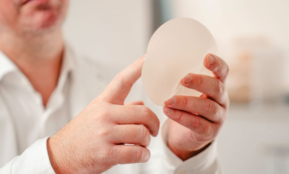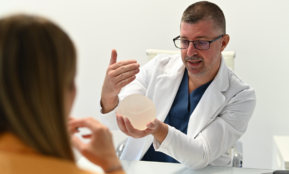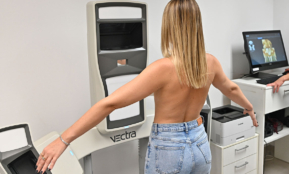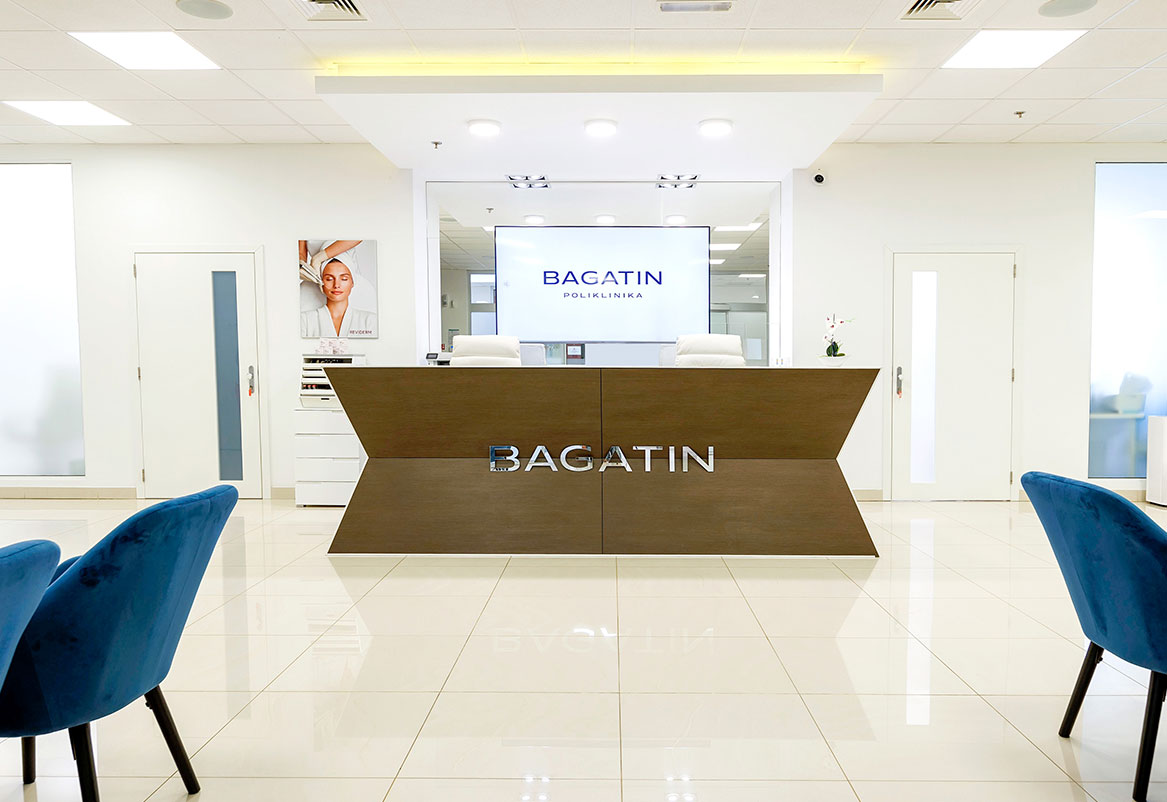Aesthetics
Face
The most modern facial treatments help you look younger, more elegant and happier.
Body
Feel comfortable in your body and correct sources of discomfort.
Chest
Make your wish for a better appearance come true and restore your self-confidence with aesthetic correction.
Hair and scalp
Minimally invasive solutions for hair loss and a natural look.
Issues
Find solutions to some of the most common aesthetic problems.
Treatments
Treatments

Hair and scalp mesotherapy

Thinning hair therapy with your own blood

Trichotest – DNA analysis of hair loss and baldness

Hair loss in women – causes and how to prevent it

Hair loss in men – causes and how to prevent it

Alopecia – hair loss
FACE

BODY
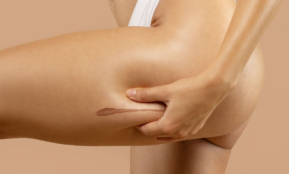
Implantology Center
Different methods of solving the problem of missing one or more teeth.
Prosthetics
The most common solution in cases of functional or aesthetic tooth damage.
Aesthetic Dentistry
Harmonious tooth shaping and tooth color correction according to your wishes.
General Dentistry
Modern and timely diagnostics, treatment and dental hygiene are the key to the health of your teeth.
Issues
Find solutions to some of the most common aesthetic problems.
About us
Locations
Description of the procedure
A ceramic or porcelain crown (cap) is a ‘cap’, or prosthetic replacement, that is an ideal solution in situations where your natural tooth is so damaged that a filling cannot fully replace the lost part.
Crowns are recommended to restore the functionality of a tooth in the event of significant decay due to extensive caries, and in endodontically treated teeth that usually have extensive damage after therapy, which is why it is necessary to primarily protect the tooth.
Ceramics have become the gold standard in dental prosthetics due to a number of good properties that other materials do not have.
It is characterized by high strength, withstands high temperature changes, and is resistant to chemical influences and corrosion.
Most importantly, it is biocompatible, does not cause allergies and aesthetically imitates the appearance of a real tooth as much as possible.
How is a ceramic crown placed?
Before placing it on natural teeth, at the Dental Center of the Bagatin Polyclinic, the dentist will first grind the tooth to create space for the crown.
Then, very precise impressions of the teeth and surrounding tissues are taken, which are sent to a dental laboratory for production.
In the next visit to our Polyclinic, the ceramic crown is cemented onto the tooth.
It adapts to the tooth so that it is comfortable in the mouth and when chewing.
The ceramic crown completely covers the crown of the tooth, that is, the visible part of the tooth that is in the mouth.
A crown is also installed on dental implants to completely replace the lost tooth in shape, size, and strength, and restore functionality and a beautiful and harmonious smile.
Permanent crowns can be made of metal-ceramic, glass-ceramic and zirconium-ceramic. Depending on the position of the tooth and the patient’s preferences, the best material for making the crown is chosen in consultation with the dentist.
What is the lifespan of ceramic crowns?
The lifespan of a crown is difficult to predict because it depends greatly on the person’s oral hygiene.
The crown itself cannot get cavities, but the tooth underneath it can. With good hygiene and check-ups, it can last from 10 to 20 years. Habits such as biting your nails, eating ice, or grinding your teeth at night significantly shorten its lifespan.
TYPES OF DENTAL CROWNS
1. Metal-ceramic crowns
The base of the crown is made of a metal alloy that is completely covered with ceramic so that the metal part is not visible.
The metals used to make metal-ceramic crowns are gold alloys, alloys of other metals (e.g. palladium, titanium) or steel-based alloys (e.g. nickel or chromium).
The main advantage of metal-ceramic crowns is that the metal in the base provides exceptional strength.
Also, due to their strength and consistency, they are often used to cover premolars and molars where strong chewing forces are present.
For clients who are allergic to other metals, we recommend white gold, which is a biocompatible precious material.
2. Zirconia-ceramic crowns
Zirconia is the latest high-quality material used to make crowns and bridges.
Zircon-ceramic crowns and bridges are characterized by biocompatibility and precision, while at the same time the natural aesthetics of the teeth are preserved.
Since mechanical resistance is achieved with a thickness of 0.4 mm, less grinding of the natural tooth is required before placing the crown.
Since zirconia-ceramic crowns are made very precisely, cleaning is made easier and gum irritation is reduced (due to the possibility of high polishing and accuracy of the crown fit).
The advantage of these crowns is the impossibility of the so-called ‘black edge’ appearing due to receding gums, because there is no metal in the construction.
Candidates
Crowns are placed for several reasons.
We replace missing teeth (teeth destroyed by caries) with crowns, which can be placed on implants or on healed parts of the tooth.
Crowns are also recommended for people who have teeth with extensive fillings (fillings) or endodontically treated teeth to protect them from cracking during function. Namely, when a large part of a tooth is missing, which has been destroyed by caries, the caries must be removed and a smaller part of the healthy tooth remains. When we have a smaller part of a healthy tooth, it cannot withstand the loads that a normal healthy tooth can withstand, so a crown is also placed on such a tooth – to strengthen it, and at the same time it is more aesthetically pleasing.
Those patients who have one or more dental implants need crowns as an abutment on the implant to successfully replace the lost tooth. When we do not have a tooth, we use crowns and bridges (bridges are multiple crowns connected into one unit).
Preparation
In our Polyclinic, a complete clinical examination of the teeth and gums, using X-rays, determines the current state of oral health, the condition of the tooth roots and surrounding bone, after which a therapy plan is created.
Before placing the crown, it is necessary to grind the tooth on all sides to create space for the crown. An impression is taken of the ground tooth, based on which the crown is made. The crown is ready in 3-4 days, depending on the complexity of the case. During this time, the patient has a temporary crown on the tooth, so that they are never without a tooth.
The amount of hard tooth tissue that needs to be removed depends on the type of crown being placed.
Procedure progress
The crown can be finished in 4 visits, including treatment.
Dental treatment is always the first step, whether it is caries removal, periodontal treatment, or endodontic treatment. The tooth must be healthy.
If a large portion of the tooth is missing, the tooth must first be strengthened with a post and replaced with a filling so that the crown can be placed.
After shaping, an impression of the tooth is taken, based on which an appropriate crown is made in the laboratory, making sure that the color matches the surrounding teeth in order to achieve the most natural appearance possible.
Until the permanent crown is placed, a temporary crown is made to protect the prepared tooth. The patient will never leave the office without teeth.
Before placement, the dentist will check whether the prepared crown matches the color and shape.
After checking, it is permanently cemented, and then the edges of the crown are additionally polished, creating an invisible connection with the tooth.
In short, the procedure is as follows:
- Treatment
- Placing posts, grinding and impressioning, making a temporary crown
- Probe
- Trial and cementation
Let us note once again that at no time does a patient leave the office without teeth.
Recovery
After cementing the crown, we advise you to avoid food for the next two hours.
There may be mild discomfort or sensitivity, especially to cold or heat, in the first few days. This can be relieved with mild analgesics.
Precautions
Avoid chewing hard foods such as nuts, hard candy, bones. The ceramic surface can chip or break.
Brush the most sensitive areas thoroughly, specifically the spaces between the teeth and the joints of the crowns with the tooth in the area of the tooth neck. Namely, crowns are made of a material that does not deteriorate over time, but your teeth with the restorations are still prone to cavities and gum disease.
For this reason, along with good oral hygiene, a check-up with a dentist every 6 months will ensure the longevity of your prosthetic work.
They said about us...
Contact us
Contact us with confidence.
By filling out this form, our call center will contact you within 24 hours to arrange your appointment. We keep all information you provide us with in the strictest confidence.
Phone:
E-mail:


